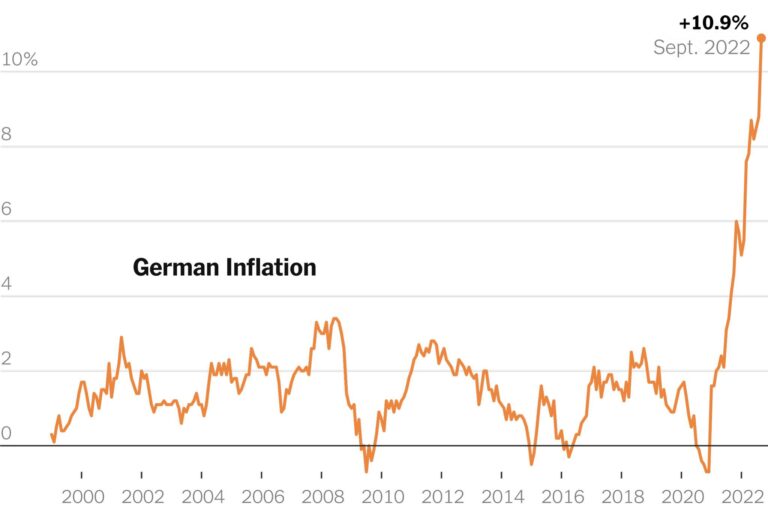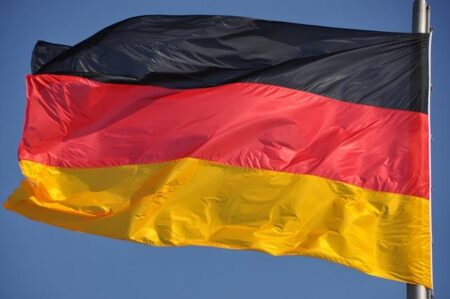Germany’s inflation rate remained steady at 2.1% in May, signaling a pause in price pressures as the country navigates ongoing economic uncertainties. This latest reading, closely watched by policymakers and investors alike, reflects the broader challenges facing the eurozone’s largest economy amid fluctuating energy costs and supply chain adjustments. Market participants tracking Germany’s economic indicators, including those invested in the iShares MSCI Germany ETF (NYSEARCA:EWG), will be assessing the implications of this stable inflation figure on future monetary policy and growth prospects.
Germany’s Inflation Rate Holds Steady at 2.1 Percent in May Signaling Economic Stability
Germany’s inflation has maintained a steady pace at 2.1 percent in May, reflecting a stable economic environment amid global uncertainties. This consistent rate indicates that the country is effectively managing price pressures without experiencing rapid acceleration or deflation. Key sectors such as energy, food, and housing exhibited minimal fluctuations, contributing to a balanced consumer price index that aligns closely with the European Central Bank’s target range.
Analysts highlight several factors behind this steadiness:
- Moderate energy costs: With oil prices stabilizing, energy expenses have not fueled inflationary spikes.
- Supply chain normalization: Reduced bottlenecks in manufacturing and distribution eased input cost pressures.
- Consumer demand balance: Steady spending patterns have prevented overheating in retail and services sectors.
| Sector | Contribution to Inflation (%) | May 2024 Change |
|---|---|---|
| Energy | 0.5 | Stable |
| Food | 0.6 | +0.1% |
| Housing | 0.7 | Stable |
Consumer Prices Show Resilience Amid Global Supply Chain Challenges Impacting Germany’s Market
Despite ongoing disruptions in the global supply chain, consumer prices in Germany demonstrated notable stability in May. The inflation rate held steady at 2.1%, reflecting the resilience of the German market amid challenges such as transportation bottlenecks and raw material shortages. Analysts attribute this steady inflation to the country’s diversified supply sources and effective cost management by manufacturers and retailers.
Key factors contributing to the price resilience include:
- Moderate energy costs supported by stable supply contracts and government measures.
- Steady demand in essential goods and services, balancing out price volatility in discretionary sectors.
- Adaptive logistics networks minimizing delays by shifting routes and increasing warehousing capacity.
| Sector | Price Change (YoY) | Impact on CPI | ||||||||||||||||||||||||
|---|---|---|---|---|---|---|---|---|---|---|---|---|---|---|---|---|---|---|---|---|---|---|---|---|---|---|
| Food & Beverages | +1.5% | Moderate | ||||||||||||||||||||||||
| Energy | +0.8% | Low | ||||||||||||||||||||||||
| Transportation | +2.3% |
| Sector | Price Change (YoY) | Impact on CPI | |||||||||||||
|---|---|---|---|---|---|---|---|---|---|---|---|---|---|---|---|
| Food & Beverages | +1.5% | Moderate | |||||||||||||
| Energy | +0.8% | Low | |||||||||||||
| Investment Strategies for Navigating Stable Inflation in Germany with Focus on Key Sectors
Stable inflation at 2.1% presents a compelling environment for investors aiming to balance growth and risk in Germany’s diverse market. Key sectors like industrial manufacturing and consumer staples offer resilience amid steady prices, making them attractive reservoirs for steady returns. Industrial firms benefit from consistent demand and export strength, while consumer staples provide defensive qualities during price stability without the volatility seen in luxury or discretionary spending. For those seeking diversification, technology and renewable energy also merit attention amid inflation stability. Consider a portfolio allocation focusing on:
Key TakeawaysIn summary, Germany’s inflation rate holding steady at 2.1% in May signals a period of relative price stability amid ongoing economic uncertainties. As Europe’s largest economy continues to navigate supply chain challenges and energy market fluctuations, this flat inflation reading offers a cautiously optimistic outlook for both policymakers and investors. Market watchers will be closely monitoring upcoming data releases to gauge whether this trend can be sustained in the months ahead. |




